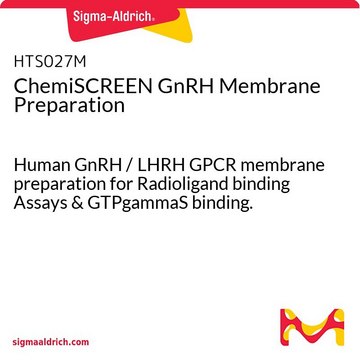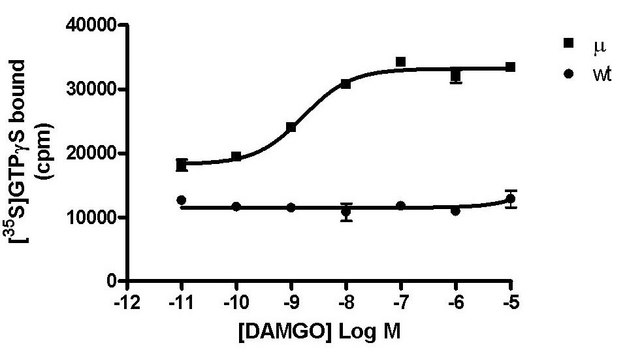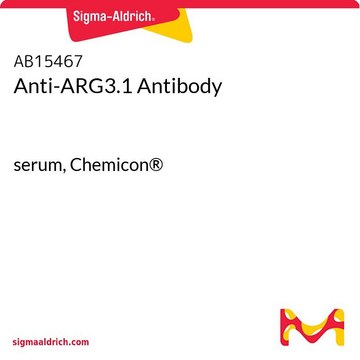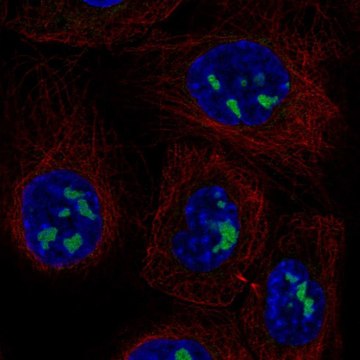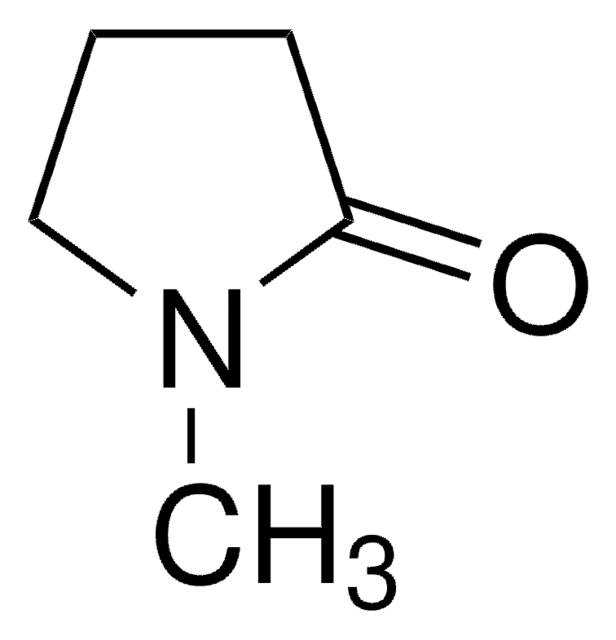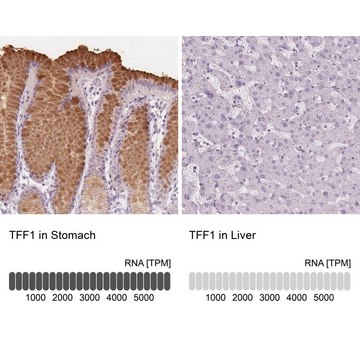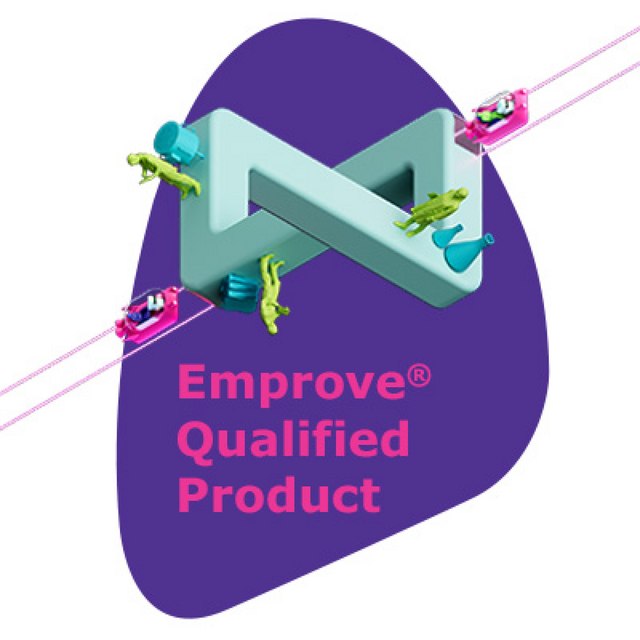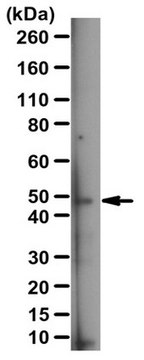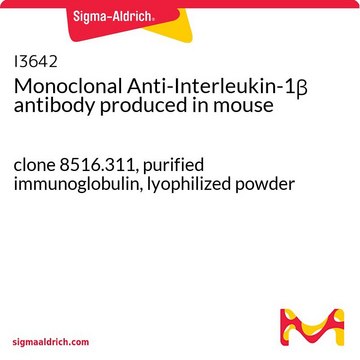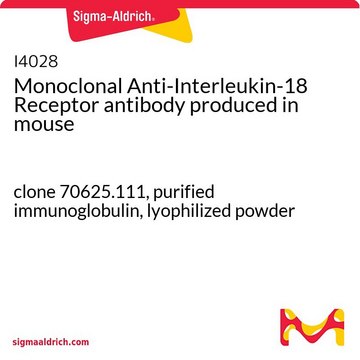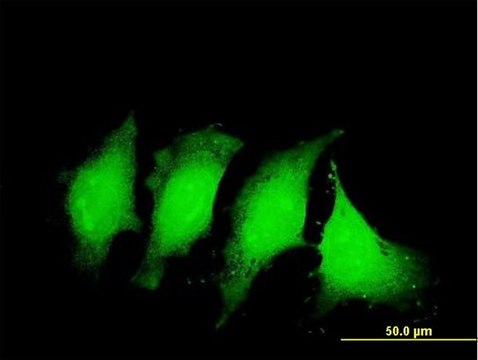HTS119M
ChemiSCREEN Membrane Preparation Recombinant Human GABAB1b/GABAB2 Receptor
Human GABAB1b GPCR membrane preparation for Radioligand binding Assays & GTPγS binding.
Select a Size
CN¥1,459.47
List PriceCN¥4,864.92Save 70%Available to ship onApril 16, 2025Details
Select a Size
About This Item
CN¥1,459.47
List PriceCN¥4,864.92Save 70%Available to ship onApril 16, 2025Details
Recommended Products
biological source
human
Quality Level
recombinant
expressed in Chem-1 cells
manufacturer/tradename
ChemiScreen
Chemicon®
technique(s)
ligand binding assay: suitable (GTPγS)
radioligand binding assay (RLBA): suitable
NCBI accession no.
UniProt accession no.
shipped in
dry ice
1 of 4
This Item | I4028 | WH0003553M1 | I7534 |
|---|---|---|---|
| antibody form purified immunoglobulin | antibody form purified immunoglobulin | antibody form purified immunoglobulin | antibody form purified immunoglobulin |
| Gene Information human ... IL1B(3553) | Gene Information human ... IL18R1(8809) | Gene Information human ... IL1B(3553) | Gene Information human ... IL1A(3552) |
| conjugate unconjugated | conjugate unconjugated | conjugate unconjugated | conjugate unconjugated |
| clone 8516.311, monoclonal | clone 70625.111, monoclonal | clone 2A8, monoclonal | clone 4414, monoclonal |
| species reactivity human | species reactivity human | species reactivity human | species reactivity human |
General description
Application
Biochem/physiol Actions
Quality
| 5 µg/well | |
|---|---|
| Signal:Background | 6.4 |
| Specific Binding (cpm) | 2879 |
SPECIFICATIONS: 1 unit = 5.0 µg membrane preparation
Bmax: 8.49 pmol/mg
Kd: 1.15 nM
Specifications
Membranes are mixed with radioactive ligand and unlabeled competitor (see Figures 1 and 2 for concentrations tested) in binding buffer in a nonbinding 96-well plate, and incubated for 1-2 h. Prior to filtration, an FC 96-well harvest plate (Millipore cat. # MAHF C1H) is coated with 0.33% polyethyleneimine for 30 min, then washed with 50mM Tris, pH 7.4. Binding reaction is transferred to the filter plate, and washed 3 times (1 mL per well per wash) with Wash Buffer. The plate is dried and counted.
Binding buffer: 1X Hanks′ Balanced Salt Solution (HBSS): GIBCO Cat. No. 14175
Radioligand: [3H]-CGP 54626A (American Radiolabeled Chemicals Inc., ART 517)
Wash Buffer: 1X Hanks′ Balanced Salt Solution (HBSS): GIBCO Cat. No. 14175
One package contains enough membranes for at least 200 assays (units), where an unit is the amount of membrane that will yield greater than 5-fold signal:background with 3H-labeled CGP 54626A at 7.5nM.
Physical form
Packaging method: Membranes protein was adjusted to the indicated concentration in packaging buffer, rapidly frozen, and stored at -80°C.
Storage and Stability
Legal Information
Disclaimer
Storage Class Code
12 - Non Combustible Liquids
WGK
WGK 2
Flash Point(F)
Not applicable
Flash Point(C)
Not applicable
Certificates of Analysis (COA)
Search for Certificates of Analysis (COA) by entering the products Lot/Batch Number. Lot and Batch Numbers can be found on a product’s label following the words ‘Lot’ or ‘Batch’.
Already Own This Product?
Find documentation for the products that you have recently purchased in the Document Library.
Our team of scientists has experience in all areas of research including Life Science, Material Science, Chemical Synthesis, Chromatography, Analytical and many others.
Contact Technical Service